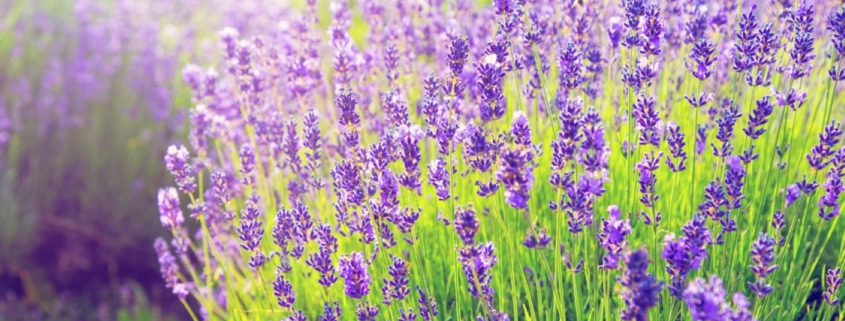Limitless Lavender
Lavender conjures up images of the south of France with row upon row of plants covered in deep purple flowers. Its familiar fragrance is in everything from soaps and soothing beauty products to essential oils. This treasured flower has so many uses and is so easy to grow.
Perennial lavender likes full sun but appreciates some afternoon shade in hot climates. They are hardy in USDA zones 5-10. Feeding with Espoma’s organic Bloom! fertilizer promotes flowering. Water young plants deeply. Once established in the ground, they are drought tolerant. Over watering can stress established plants.
Lavender is considered a woody plant and should be pruned back by one third in the spring to keep them tidy. They bloom in early to mid-summer and the flowers may be harvested to use fresh or dried.
How to Harvest and Use Lavender
- Harvest lavender when the flowers just begin to open. They are at their most fragrant and beautiful at that time. Plus, cutting them early encourages plants to flower a second time.
- It’s best to harvest lavender in the morning after the dew has dried and before the hot sun draws out their essential oils. Cut them back to about an inch above the place the foliage starts. It’s best to just cut the thin stems and not the foliage.
- Use fresh lavender in bouquets to fill your home with their delicate fragrance. Add a fresh organically grown stem to a glass of Prosecco, it looks gorgeous and imbibes the drink with a delicate flavor. Try it in lemonade for a refreshing new twist. Make lavender sugar by layering fresh flowers in between layers of sugar in a jar. The flowers will impart flavor and color. Use it as sanding sugar for cookies or add to ice tea.
- Dry lavender in small bunches, hanging upside down in a cool dark place. A drying rack for laundry works well. Keep an eye on them, they may need to be re-tied as they dry and stems shrink.
- Dried lavender can be made into sachets, potpourris, soap, and more. Pair dried lavender with a thick slice of brie, drizzled with honey and strewn with a few dried lavender flowers for an “instagramable” cheese board. Keep in mind, dried lavender has a strong flavor, so use it sparingly.
If this isn’t enough to convince you to try growing lavender, it’s good for the environment too. It attracts butterflies, bees and other beneficial insects.
Here are some of our blogs that we think you might be interested in.
Bug Off: Plants to Repel Mosquitoes (Spoiler Alert – one of them is lavender!)
5 Edible Flowers to Grow in Your garden
Grow a garden Spa for Mother’s Day
Espoma Products Bloom!

Include the below code at the bottom of all blogs



Leave a Reply
Want to join the discussion?Feel free to contribute!